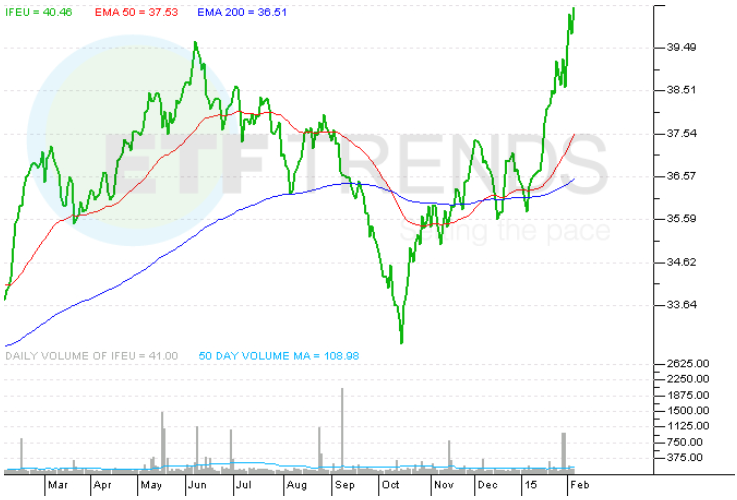Investing In REITs (VNQ SPG EQR RWR)
Post on: 19 Июнь, 2015 No Comment

Since bottoming out in 2009, commercial real estate continues to be a top draw for investors. Especially those firms structured as real estate investment trusts (REITs). REITs have been on fire as the combination of low interest rates. demand for high dividends and rebounding property values have made them attractive for investors since the end of the Great Recession .
However, the sharp rise in REIT share prices and continued investor attraction over the years has some analysts questioning whether they have become overvalued, especially if the Federal Reserve begins tightening and raising interest rates.
Despite these concerns, there is still much to like about the commercial real estate sector and REITs have historically been one of the best places in which to invest. For investors, REITs continue to be one of the brightest spots for total return potential. (For more, see: 5 Types of REITs and How to Invest in Them ).
A Great Track Record
Firms that own physical properties or mortgages backed by those properties have had an amazing run over the last few years. That run was capped off with a nearly 27.2% gain in 2014 for the FTSE NAREIT All REITs Index. That compares to just a 13.7% return for the broad Standard & Poor’s 500 Index. That sort of market beating return was above historical norms, according to analysts. (For more, see: The Rise of the REITs ).
With that in mind, investors may feel a bit gun shy when it comes to REITs, especially as so-called “risk assets” have sold off in recent weeks among rising market volatility. The truth is that REITs should continue to put up impressive long term total return performance.
Historically, REITs over the last 40 years have managed to produce average total returns in the neighborhood of 13%. That still bests the broader stock market over the same period. Part of that total return comes from REITs’ juicy dividends. In order to qualify for federal tax breaks, REITs are required to pay out 90% of their net income to shareholders through dividends. Currently, the FTSE NAREIT All REITs Index is yielding a healthy 3.5%. (For more, see: The Basics of REIT Taxation ).
Loading the player.
What’s more is that those high dividend payments seem to run contrary to conventional thinking that rising interest rates kill high dividend stocks. Many REITs rents are tied to measures of inflation which means payouts continue to rise as interest rates do. And while REITs share prices initially feel rising interest rates, they quickly rebound pass these knee-jerk reactions. Since 1980, REITs have managed to return an average of 16% over the next 12 months during the 21 periods of rising interest rates. This combination of price appreciation and rising dividends has managed to crush the Barclays Capital U.S. Aggregate Bond Index. (For more, see: The Impact of Interest Rates on Real Estate Investment Trusts ).
There is no reason to think that REITs won’t have another good year in 2015. Many of the same catalysts that have propelled them in the past are still in place.
Adding REIT Exposure
Given commercial real estate’s historical interest rate and market beating returns, investors may want to add them to a portfolio. There’s a plethora of ways to do just that. With volatility returning to the market investors may want to stick with the largest and quality REITs. (For more, see: How to Assess a Real Estate Investment Trust ).
The Vanguard REIT Index ETF (VNQ ), for example, remains one of the largest and cheapest options for investors. VNQ spreads its $27 billion in assets among 143 different REITs. This includes industry stalwarts like Simon Property Group (SPG ) and Equity Residential (EQR ). Retail, residential and health care-focused property owners make up the bulk of VNQ’s holdings. And as a Vanguard sponsored fund, the ETF is dirt cheap when it comes to operating expenses. VNQ charges a rock-bottom 0.10% and yields 3.69%. (For more, see: 4 Hot Real Estate REIT ETFs ).
Another broad-based and cheap option is the SPDR Dow Jones REIT ETF (RWR ). It has $3.4 billion in assets and an expense ratio of 0.25%. (For more, see: What Are the Best Real Estate REIT ETFs? ).
ETF sponsor Blackrock’s (BLK ) iShares offers two funds, the iShares Real Estate 50 (FTY ) and iShares Cohen & Steers REIT (ICF ). FTY tracks the 50 largest REITs in the U.S. while ICF tracks the top 32. Both offer a concentrated play on the largest and best of breed REITs.
Finally, for investors strictly looking for yield, the PowerShares KBW Premium Yield Equity ETF (KBWY ) could be an interesting pick. This ETF focuses on the highest yielding equity REITs. While its holdings are firmly mid and small-caps, investors are compensated for the risk with a hefty 4.61% dividend yield.
The Bottom Line
After a torrid run since the depths of the Great Recession, some market participants are worried about the future of REITs as an investment. Historically, however, REITs have been a great place to invest for the long haul.














